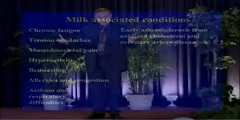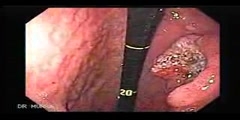Emerging Diseases - Early Warning and Surveillance Systems
In episode 48 of MicrobeWorld Video, filmed at the American Association for the Advancement of Science Meeting in Washington, D.C., on February 18, 2011, Dr. Stan Maloy talks with Stephen S. Morse, Ph.D., Professor of Clinical Epidemiology and Founding Director and Senior Research Scientist, Center for Public Health Preparedness, Mailman School of Public Health, Columbia University. Infectious diseases remain major causes of illnesses and fatalities worldwide. Although many are known, new infections are increasingly entering the human population often spreading from geographically isolated areas due in part to ecological changes, a globally driven market for goods and services, and air travel. These emerging threats to human health include, but are not limited to, HIV/AIDS, SARS (Severe Acute Respiratory Syndrome), Nipah, and pandemic influenza. In this interview Dr. Morse emphasizes that it is essential to have early warning and surveillance systems in place if we wish to prevent existing infectious diseases from increasing their range and to avoid the next pandemic. As many emerging infections, or their close relatives, already exist in other species, the “One Health” approach is invaluable in helping to identify and track these pathogens in nature, and to target surveillance efforts. Also discussed in this interview is the U.S. Agency for International Development's (USAID) “Emerging Pandemic Threats” (EPT) program, which includes PREDICT, a project to build global capacity for surveillance and prediction of novel infections that have pandemic potential. EPT/PREDICT uses the “One Health” approach to target and integrate surveillance in wildlife, livestock, and humans, and develop a framework for risk assessment. These approaches are enabled by improved understanding of factors driving infectious disease emergence, and new technological capabilities for modeling and informatics, diagnostics and pathogen identification, and communications (e.g., disease reporting using cellphones).
Video is embedded from external source so embedding is not available.
Video is embedded from external source so download is not available.
Channels: Microbiology Interviews
Tags: emerging diseases surveillance early warning microbeworld world infectious ASM Stephen Morse Stanley Maloy USAID
Uploaded by: microbeworld ( Send Message ) on 25-04-2011.
Duration: 9m 37s














